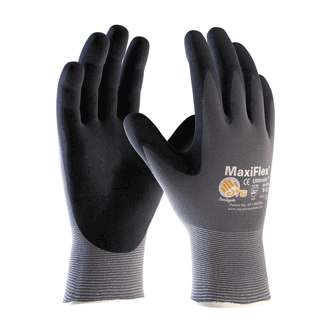There are several factors that play into the lifespan of your nitrile coated work gloves. As with most items, the better job you do of taking care of them and keeping them clean, the longer they will last before needing to be replaced. If you are using and wearing work gloves on a daily basis, you should not be surprised that you’ll need to replace them eventually.
The definitive answer for how long your nitrile coated work glove should last doesn’t really exist. You’ll have to regularly assess the state of your work gloves and look for signs that tell you when it is time to get a new pair of gloves. One of the clearest signs it’s time for a new pair is by observing any wear and tear on your gloves. If you begin to see the material of your glove fray, get small snags, or anything along those lines, it is time to get rid of those gloves. Even if those don’t seem like very intense types of damage, even small amounts of wear and tear on your glove can significantly reduce the level of protection you are receiving. Gloves are constructed with certain properties meant to protect you from hazards in the workplace, and when that is compromised, protection decreases.
If you want to extend the life of your work gloves, one of the best things you can do is to begin a laundering process. Think about it, you wouldn’t wear the same work clothes for three weeks in a row, so why would you wear your work gloves in that manner? Even if you don’t have a laundering service, or can’t afford one, most work gloves nowadays can easily be thrown in with your regular laundry. Most materials including nylon, poly/cotton blends, and other patented materials like Kevlar and Dyneema are all safe to go in the regular wash. It is important to note that gloves engineered to be flame retardant will become more flammable the more you wash them due to contaminant build up from the detergent. Materials that are inherently flame resistant are ok to be washed.
When determining when your work gloves have come to the end of their lifespan, keep in mind the level and amount of hazards they encounter on a regular basis and take into account how often you wash them. Simply put, keep an eye on your gloves, and when you begin to see signs of wear and tear, we’ve got you covered with a new pair.




